|
Green City, Clean Waters is Philadelphia's plan to reduce stormwater pollution currently entering our Combined Sewer System through the use of green infrastructure. Green City, Clean Waters represents a major shift in the way we think about and deal with stormwater in Philadelphia. We’re recreating the living landscapes that once slowed, filtered, and consumed rainfall by adding green to our streets, sidewalks, roofs, schools, parks, parking lots and more—any impermeable surface that’s currently funneling stormwater into our sewers and waterways is fair game for greening. It’s going to take decades of work, but when it’s all done, we’ll have reduced the stormwater pollution entering our waterways by a stunning 85 percent. That means rivers and streams that are swimmable, fishable, drinkable on a level exceeding even the memory of Philadelphia’s oldest residents. Since Green City, Clean Waters was adopted in June 2011, Philadelphia Water and private developers have added over 1,100 green stormwater tools to our landscape. |
|
|
Now: Our green infrastructure is already providing water quality benefits. Green City, Clean Waters improvements allow Philadelphia to enjoy better water quality and environmental and social benefits right now. |
Better. Green City, Clean Waters is creating environmental, social, and economic benefits that our neighborhoods would otherwise miss out on. Green infrastructure projects are increasing property values, beautifying neighborhoods, fighting extreme summer heat, creating natural habitats, enhancing public space and schools and even making neighborhoods safer. |
| Fairer.Our 25-year plan is a cost-saving program that lets Philadelphia Water minimize rate increases and keep water affordable for all. | Jobs. Green City, Clean Waters is fueling a green jobs economy in Philadelphia, creating high-value new jobs for residents and attracting smart workers and firms to our city. An ambitious and forward-thinking green infrastructure plan needs an ambitious and forward-thinking workforce to succeed, and we’re making that happen right here, right now. |
|
Green City, Clean Waters Turns 5 June 2016 marks the five-year anniversary of Philadelphia’s groundbreaking agreement with regulators to take on stormwater runoff and combined sewer overflows—the biggest sources of pollution impacting our rivers today—using a program that relies on substantial green infrastructure investments. Working with public and private partners, the City of Philadelphia has added thousands of green tools to our neighborhoods, protecting our rivers and streams while making our city a better place to live, learn, work and play. And we're just getting started. Check out our "5 Down" page learn more about how we are now keeping 1.5 billion gallons of polluted water out our rivers and streams this year + what's in store for the next 20 years. |
|
|
Key Concepts To learn more about Green City, Clean Waters, we recommend you start with the Summary Report. To help you understand the terminology and issues behind Green City, Clean Waters (technically known as the CSO Long Term Control Plan Update), here are some key concepts that inform our planning and solutions:
|
Stormwater Management Tools
| How do we keep stormwater from causing sewer overflows into our rivers and streams? PWD's green stormwater infrastructure tools evaporate some of the runoff into the ground, evaporate a portion of it into the air, and in some cases slowly release the water into the sewer system. | Stormwater Planter |
Porous Pavement |
Stormwater Wetland |
| Videos | The Big Green Map |
|||
Green City, Clean Waters Green Homes |
Columbus Square Park Greener, Healthier Playgrounds |
 |
||
| more videos >> | view our green infrastructure projects >> |
|
CSO Long Term Control Plan Update Documents
EPA Administrative Order for Compliance on Consent
EPA Partnership Agreement
On April 10, 2012, the City of Philadelphia and the U.S. Environmental Protection Agency signed a partnership agreement to recognize the Green City, Clean Waters plan and its approach to stormwater management.
PA DEP Consent Order and Agreement
Consent Order and Agreement executed with the Pennsylvania Department of Environmental Protection on June 1, 2011 for the implementation of the Philadelphia Water Department's Combined Sewer Overflow Long Term Control Plan Update (Green City, Clean Waters Plan)Complete Document (5.5 MB)
Consent Order and Agreement Required Deliverables
The following documents were submitted to the Pennsylvania Department of Environmental Protection as required by Appendix G of the Consent Order and Agreement.The Implementation and Adaptive Management Plan (IAMP) was submitted to the PADEP by December 1, 2011. This plan provided the implementation framework for the Green City, Clean Waters program proposed in the LTCPU and its supplements. This plan described the programmatic elements that will be developed during the first five years of COA implementation. Implementation and Adaptive Management Plan (1.1 MB) The Green Stormwater Infrastructure (GSI) Maintenance Manual Development Process Plan was submitted to the PADEP by June 1, 2012. This plan describes the current green stormwater infrastructure maintenance program and provides an overview of the process to develop the GSI Maintenance Manual by June 1, 2014. Green Infrastructure Maintenance Manual Development Process Plan (1 MB) The Plant Identification Manual contains information needed to make informed decisions about plant selection for GSI projects. When choosing plants for a GSI project, the information in this manual can help narrow the choices down to the most appropriate plant for each location. The Plant Identification Manual (22 MB) The Water Department's Comprehensive Monitoring Plan was approved May 28, 2014. The plan was originally submitted on June 1, 2013 and revised January 10, 2014 to incorporate PWD's responses to comments received from PADEP and USEPA. It is our initial plan for performing monitoring of natural and engineered systems associated with our Green City, Clean Waters program and addresses the monitoring and assessment of surface waters, groundwater, rainfall, CSO discharges, sewer flows, and green infrastructure performance. Comprehensive Monitoring Plan (10.1 MB) The Facility Concept Plans for the three Water Pollution Control Plants (NE, SE, SW) were submitted to the PADEP by June 1, 2013. These plans describe the specific engineering and construction activities proposed to increase the maximum wet weather flow into each water pollution control plant facility and thereby increase the capture rate of combined sewage.The Northeast Facility Concept Plan was revised based on comments from PADEP and re-submitted on December 31, 2013.
Northeast Facility Concept Plan The Wet Weather Facility Plan for the three Water Pollution Control Plants (NE, SE, SW) was submitted to the PADEP by June 1, 2016. This plan supersedes the Facility Concept Plans for all three Water Pollution Control Plants (WPCP) and provides details on scheduling, cost, and anticipated construction completion for each project listed in the Facility Concept Plans. An update on ongoing studies and new concepts being developed by Philadelphia Water Department to increase wet weather flow capacity in both the Collection System and the WPCPs are included. The Updated Nine Minimum Controls Report was submitted to the PADEP by June 1, 2013. This report is an update to the 1995 "Implementation of Nine Minimum Controls" document and indicates how the City's activities are being carried out currently, and highlight how these activities may have changed as a result of new technology, new practice, or other circumstances to address the CSO Nine Minimum Controls.
Updated Nine Minimum Controls Report (1.51 MB) The Tributary Water Quality Model for Bacteria was submitted to the PADEP by June 1, 2013. This report describes the methods and results of a model that simulates bacteria concentrations in the nontidal reaches of Tacony/Frankford Creek and the Cobbs Creek that are affected by CSOs.
Tributary Water Quality Model for Bacteria Report (6.65 MB) The Tributary Water Quality Model for Dissolved Oxygen was submitted to the PADEP by June 1, 2014. This report describes the methods and results of a receiving water quality model for Dissolved Oxygen (DO) in the nontidal extents of Tacony-Frankford Creek and Cobbs Creek. Extensive field monitoring data were used to develop and validate the model, which simulates existing DO conditions and underlying stream processes in the receiving waters. Tributary Water Quality Model Report for Dissolved Oxygen (5.04 MB) The First Edition of the Green Infrastructure Maintenance Manual was submitted to the PADEP by June 1, 2014. The Manual describes the operation and maintenance of the full range of types of green stormwater infrastructure projects that have been, and that are proposed to be, implemented by the City as part of the CSO Program. The Manual is designed to be used by City agencies and anyone else who has responsibility for performing maintenance of green stormwater infrastructure. The Deliverable required by the Consent Order and Agreement should be considered the "first edition" of the Manual, since it is expected that the Manual will need to be updated periodically as the technology of green stormwater infrastructure advances, and as experience is gained with specific practices. Green Infrastructure Maintenance Manual - First Edition (6 MB) The GSI Maintenance Manual was submitted as a Green City, Clean Waters deliverable in June 2014 and was updated in 2016 to reflect lessons learned in the field and to provide a more user-friendly interface. Green Infrastructure Maintenance Manual Version 2.0 (9 MB) The Sanitary Sewer Evaluation Survey (SSES) Report was submitted to the PADEP by June 1, 2014. The report describes the results of analyses performed using the USEPA sanitary Sewer Overflow Analysis and Planning Toolbox on flow metering data collected in the areas of the city served by separate sanitary sewers. The primary goal of the SSES is to address I/I in the separate sewer areas tributary to the City’s water pollution control plants by quantifying and characterizing monitored wastewater flows. The results characterize the base wastewater flows, the groundwater infiltration, and the rainfall-derived infiltration and inflow conditions within these portions of the City.
Sanitary Sewer Evaluation Survey (SSES) Report (17.4 MB) The Tidal Waters Water Quality Model - Bacteria and Tidal Waters Water Quality Model - Dissolved Oxygen were submitted as one report to the PADEP by June 1, 2015. The report describes the methods, and provides the results, of a project to model the receiving water quality in the tidal Delaware River and the tidal Schuylkill River. Some errors and omissions identified by the authors after the publication of this report are corrected through an addendum posted to this location. As expected, those changes did not have a significant influence on the tidal water quality results described herein, and did not lead to any alteration of the conclusions reached in this report. The corrections address the inadvertent omission of the discharges from 12 combined sewer overflow points (of the 176) in the City (F04, F05, F06, F07, R18 in the Tacony-Frankford creeks basin; C19, C20, C21, C22 and C23 in the Cobbs Creek basin; and, P01 and P02 in the Pennypack Creek basin). In addition, some minor inadvertent anomalies occurred with respect to a small subset of municipal/industrial point source discharges, model boundary conditions, and minor stream/direct watershed inputs, as listed below. The updated report, with addendum, is available through the link below. Tidal Waters Water Quality Model – Bacteria and Dissolved Oxygen Report (15.4 MB) The Outlying Communities Report was submitted to the PADEP by June 1, 2015. The report describes the activities conducted by PWD to analyze, quantify and characterize the dry weather and wet weather flows conveyed from outlying community points of connection to the City’s combined and separate sewer systems. Outlying Communities Report (24 MB) The Year 5 Evaluation and Adaptation Plan was submitted to the PADEP by October 30, 2016. This plan represents the culmination of the first five years of program progress and includes an assessment of compliance with the Water Quality Based Effluent Limits (WQBEL) Performance Standards.
Evaluation and Adaptation Plan (6 MB)
Summary Report
Summary Report - amended June 1, 2011
High Resolution (95 MB)
Long Term Control Plan Update
Complete Document (30 MB) Section 1 Introduction and Background Section 2 Public Participation Section 3 Characterization of Current Conditions Section 4 Problem Analysis and Goal Setting Section 5 Overview of the LTCPU Section 6 Land-Based Control Measures (Source Controls) * Section 7 Water-Based Control Measures Section 8 Infrastructure-Based Control Measures * Section 9 Development and Comparison of Alternatives * Section 10 Recommend Plan Elements Section 11 Financial Capability Section 12 Post-Construction Monitoring
Supplemental Documentation
All Volumes (118 MB) Volume 1 Public Participation Supplemental Documentation Volume 2 Triple Bottom Line Analysis Volume 3 Basis of Cost Opinions Volume 4 Hydrologic and Hydraulic Modeling Volume 5 Precipitation Analysis Volume 6 Stress Testing of the Northeast WPCP Volume 7 Stress Testing of the Southeast WPCP Volume 8 Stress Testing of the Southwest WPCP Volume 9 Analysis of Wet Weather Treatment Alternatives for Northeast WPCP Volume 10 Analysis of Wet Weather Treatment Alternatives for Southeast WPCP Volume 11 Analysis of Wet Weather Treatment Alternatives for Southwest WPCP Volume 12 TTF Watershed Comprehensive Characterization Report Volume 13 TTF Integrated Watershed Management Plan Volume 14 Darby-Cobbs Watershed Comprehensive Characterization Report Volume 15 Cobbs Creek Integrated Watershed Management Plan Volume 16 Cobbs Creek Vision Document Volume 17 Tookany/Tacony-Frankford Vision Document |
Partnerships
|

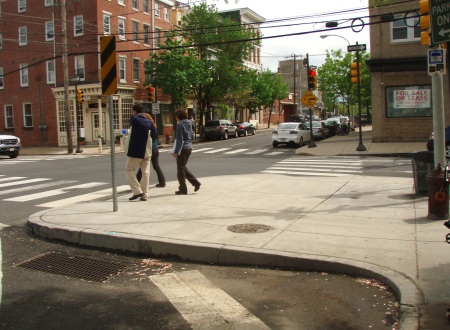
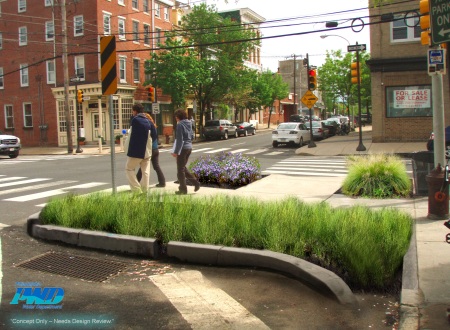
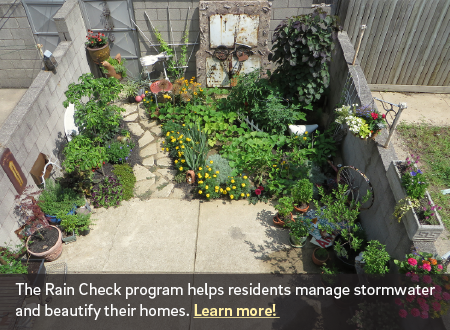
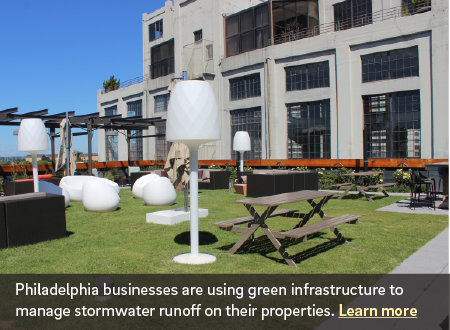
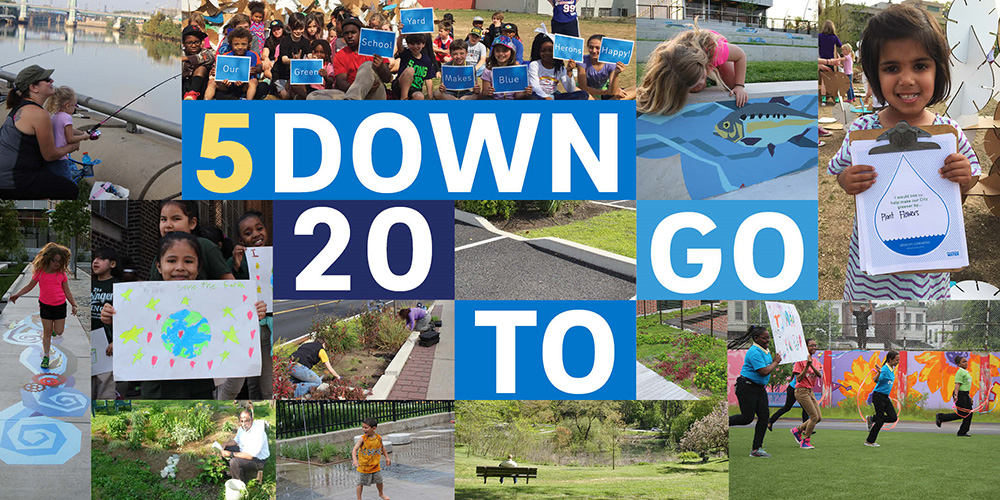

 The U.S. Environmental Protection Agency and the City of Philadelphia have partnered to advance green infrastructure for urban wet weather pollution control. This partnership assures EPA’s support of Philadelphia’s adoption of green infrastructure to improve both water quality and the sustainability of its neighborhoods.
The U.S. Environmental Protection Agency and the City of Philadelphia have partnered to advance green infrastructure for urban wet weather pollution control. This partnership assures EPA’s support of Philadelphia’s adoption of green infrastructure to improve both water quality and the sustainability of its neighborhoods.  The U.S.-Brazil
The U.S.-Brazil